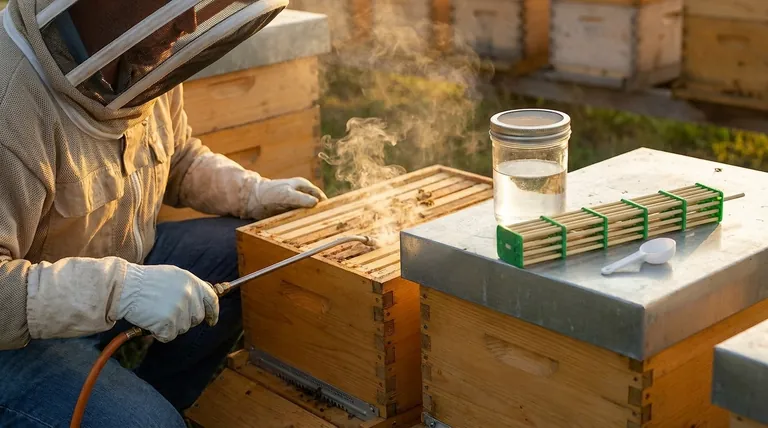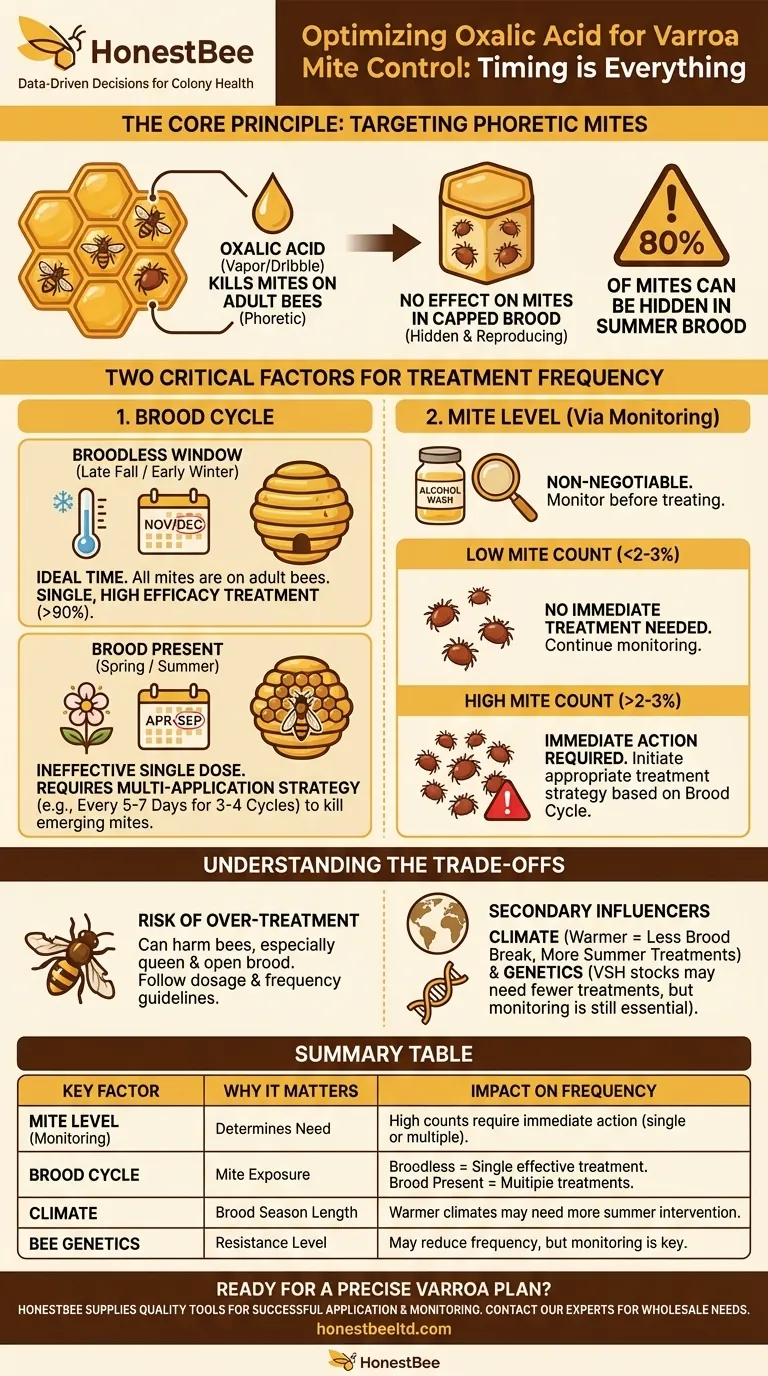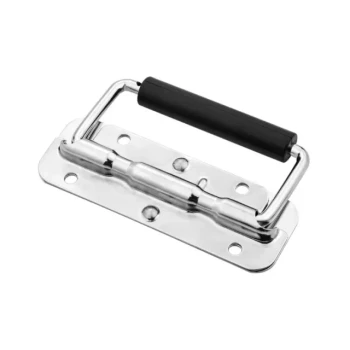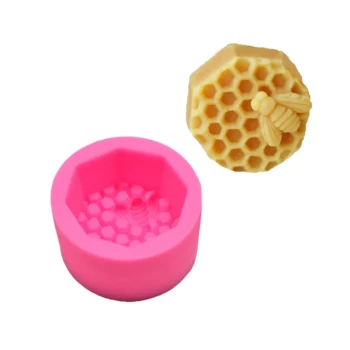Ultimately, there is no fixed schedule for oxalic acid treatment. The frequency is not determined by the calendar, but by two critical, interconnected factors: your colony's current mite level and its brood cycle. Factors like your geographic location and bee genetics influence these two primary drivers, but they are not the starting point for your decision.
The central principle you must understand is that oxalic acid is only effective against Varroa mites on the bodies of adult bees (phoretic mites). It does not penetrate the wax cappings of brood cells, where the vast majority of mites reproduce. Therefore, your treatment strategy must be timed to target the mites when they are most exposed.

The Core Principle: Targeting Phoretic Mites
To use oxalic acid effectively, you must think like a mite. The Varroa destructor's life cycle dictates the rules of engagement for any treatment.
How Oxalic Acid Works
Oxalic acid is a "contact" miticide. When applied as a vapor or a liquid dribble, it kills the mites that are physically present on the adult bees.
It has virtually zero effect on the mites reproducing within sealed brood cells, which are protected under a layer of wax.
The Mite's Hidden Majority
During the spring and summer, when the queen is laying prolifically, up to 80% of a colony's mite population can be hidden away in the capped brood. A single treatment during this period will miss the vast majority of mites, which will simply emerge with new bees days later.
The "Broodless" Window of Opportunity
The ideal time for a single, highly effective oxalic acid application is when the colony has little or no capped brood. This naturally occurs in late fall or early winter as temperatures drop and the queen stops laying.
During this broodless period, all mites are forced onto the adult bees, making them completely vulnerable to a single treatment. An application at this time can achieve over 90% efficacy, dramatically reducing the mite load going into winter.
Building a Treatment Calendar Around the Brood Cycle
Your goal is not to treat "often" but to treat at the right time. This means moving from a schedule-based mindset to a data-driven, strategic approach.
The Cornerstone: The Late Fall Treatment
For beekeepers in climates with a cold winter, the single, late-season treatment when the colony is broodless is the most important application of the year. This is your "knockdown" or "cleanup" treatment that resets the mite population to a very low level.
Summer Management: The Multi-Application Strategy
Treating in summer is only necessary if mite monitoring shows that populations have crossed a critical threshold (e.g., >2-3% infestation rate from an alcohol wash).
Because brood is present, a single treatment is ineffective. You must use a multi-application strategy. This involves applying oxalic acid multiple times, spaced apart to kill mites as they emerge from brood cells. A common approach is to treat once every 5-7 days for 3 to 4 cycles to break the mite reproductive cycle.
The Importance of Mite Monitoring
You cannot know if or when to treat without data. Regularly monitoring mite levels using an alcohol wash or a powdered sugar roll is non-negotiable for effective Varroa management. Treating without confirming mite levels is like taking medicine without a diagnosis—it's wasteful and potentially harmful.
Understanding the Trade-offs and Risks
Oxalic acid is a powerful tool, but it is not a silver bullet and carries risks if misused.
Primary Limitation: Ineffective on Brood
This cannot be overstated. Relying on single oxalic acid treatments during periods of heavy brood rearing will fail to control mite populations. It gives a false sense of security while the underlying problem grows.
Risk of Over-treatment
Oxalic acid is an acid. While organic and approved for honey supers (vaporization method only), it can be harsh on bees, especially open brood and the queen, if the dosage is wrong or it's applied too frequently in a short period. Always follow the manufacturer's instructions for the specific application method you are using.
Secondary Factors: Climate and Genetics
Your location and bee stock influence your overall strategy.
Your Climate's Impact: In warmer regions with little to no natural brood break, you cannot rely on a single late-fall treatment. You will need to depend more heavily on summer multi-application strategies or create an artificial brood break by caging the queen.
Your Colony's Genetics: Bees bred for Varroa Sensitive Hygiene (VSH) or other mite-resistant traits can manage mite populations more effectively on their own. They may require fewer treatments, but they are not immune. They still require regular monitoring.
Making the Right Choice for Your Goal
Base your oxalic acid strategy on your specific management philosophy and the conditions in your apiary.
- If your primary focus is maximum efficacy with minimal intervention: Rely on a single oxalic acid treatment performed during the natural broodless period in late fall or early winter, after confirming mite levels are low enough to wait.
- If your primary focus is controlling a high mite count in summer: Use a multi-application strategy (e.g., 3-4 treatments, 5-7 days apart) only after a mite count confirms it's necessary.
- If your primary focus is a long-term Integrated Pest Management (IPM) plan: Use oxalic acid as your preferred treatment for the broodless period and combine it with regular mite monitoring and potentially other control methods (like drone brood removal) during the season.
By timing your actions to the life cycle of the mite, you transform oxalic acid from a simple chemical into a precise and powerful tool for ensuring your colony's long-term health.
Summary Table:
| Key Factor | Why It Matters | Impact on Treatment Frequency |
|---|---|---|
| Mite Level (via Monitoring) | Determines if treatment is needed. | High mite counts (>2-3%) require immediate action, often with multiple treatments. |
| Brood Cycle | Oxalic acid only kills mites on adult bees, not in sealed brood. | Single, highly effective treatment during broodless periods (e.g., late fall). Multiple treatments (every 5-7 days) when brood is present. |
| Climate | Influences the length of the brood-rearing season. | Warmer climates may require more frequent summer treatments due to a lack of natural brood break. |
| Bee Genetics | Some stocks (e.g., VSH) are more mite-resistant. | May reduce the number of treatments needed, but monitoring is still essential. |
Ready to implement a precise, data-driven varroa management plan?
Effective mite control starts with the right equipment and a solid strategy. At HONESTBEE, we supply commercial apiaries and beekeeping equipment distributors with the high-quality tools needed for successful oxalic acid application and mite monitoring.
Let us help you protect your investment and ensure colony health. Contact our expert team today to discuss your wholesale needs.
Visual Guide

Related Products
- Professional Bamboo Queen Isolation Cage
- Varroa Easy Check Mite Tester Kit Counter Alcohol Wash Jar
- Metal Queen Bee Excluder for Beekeeping
- Professional Plastic Queen Excluder for Modern Beekeeping
- Wooden Bee Brush with Double-Row Horsehair Bristles
People Also Ask
- What are the components of a standard queen cage? A Guide to Safe Queen Introduction
- What is sequestration, and how does it help bees reorient? A Safer Guide to Hive Relocation
- How should a queen cage be maintained over time? Ensure Queen Introduction Success
- What happens if a nuc does not have a laying queen after three weeks? A Beekeeper's Guide to Colony Survival
- Why is the candy in shipping cages important? Ensure Your Queen Bee is Accepted by the Hive



















